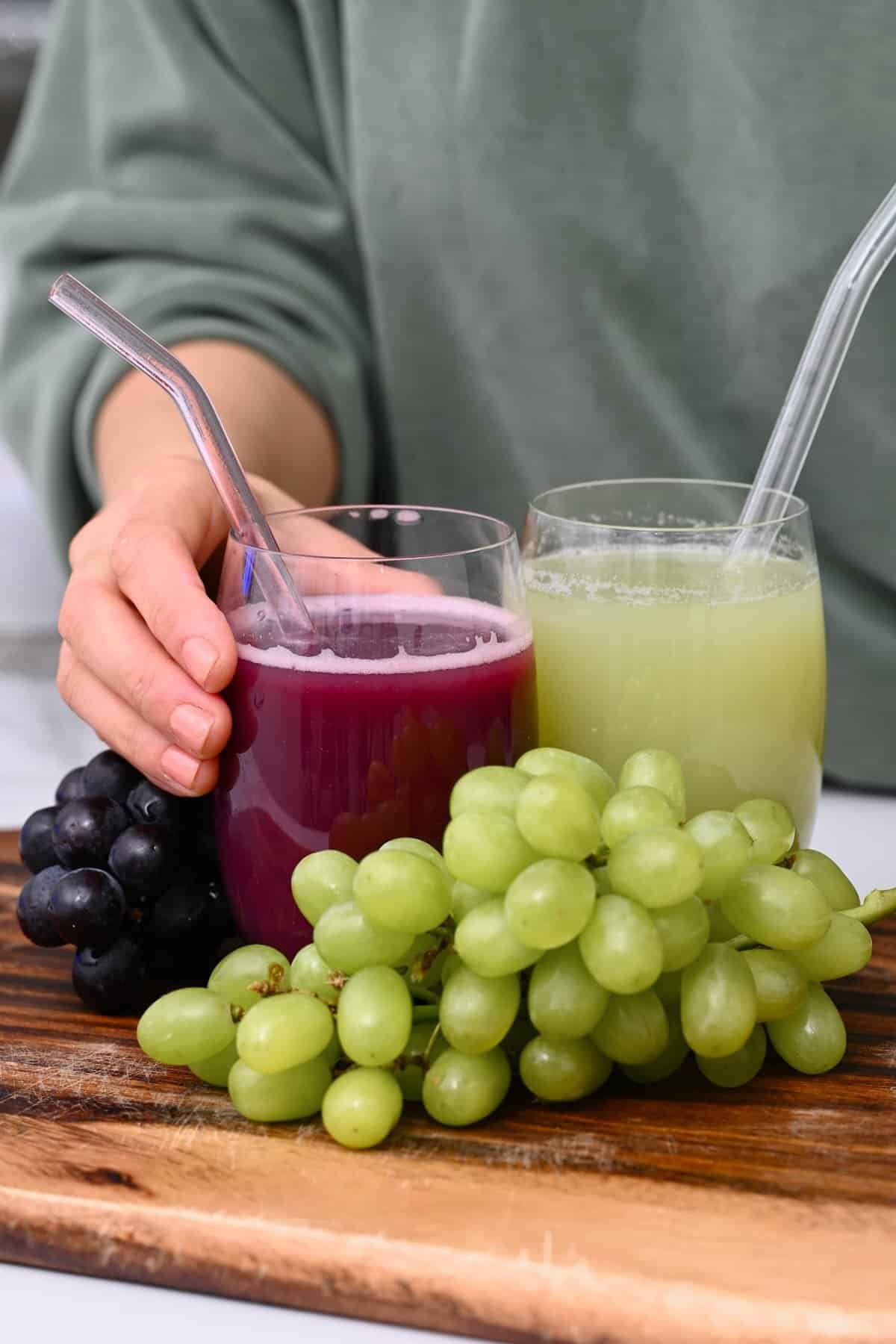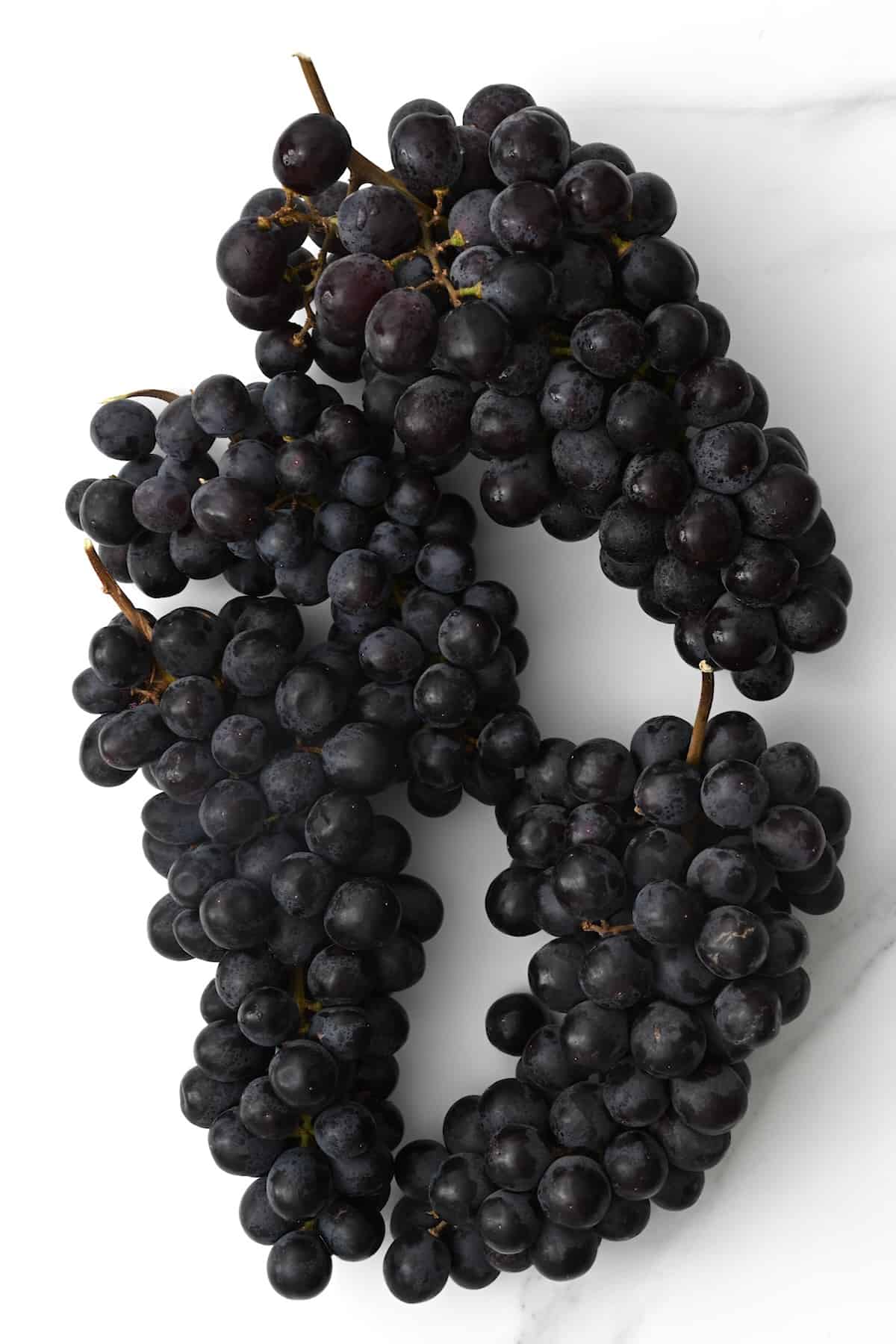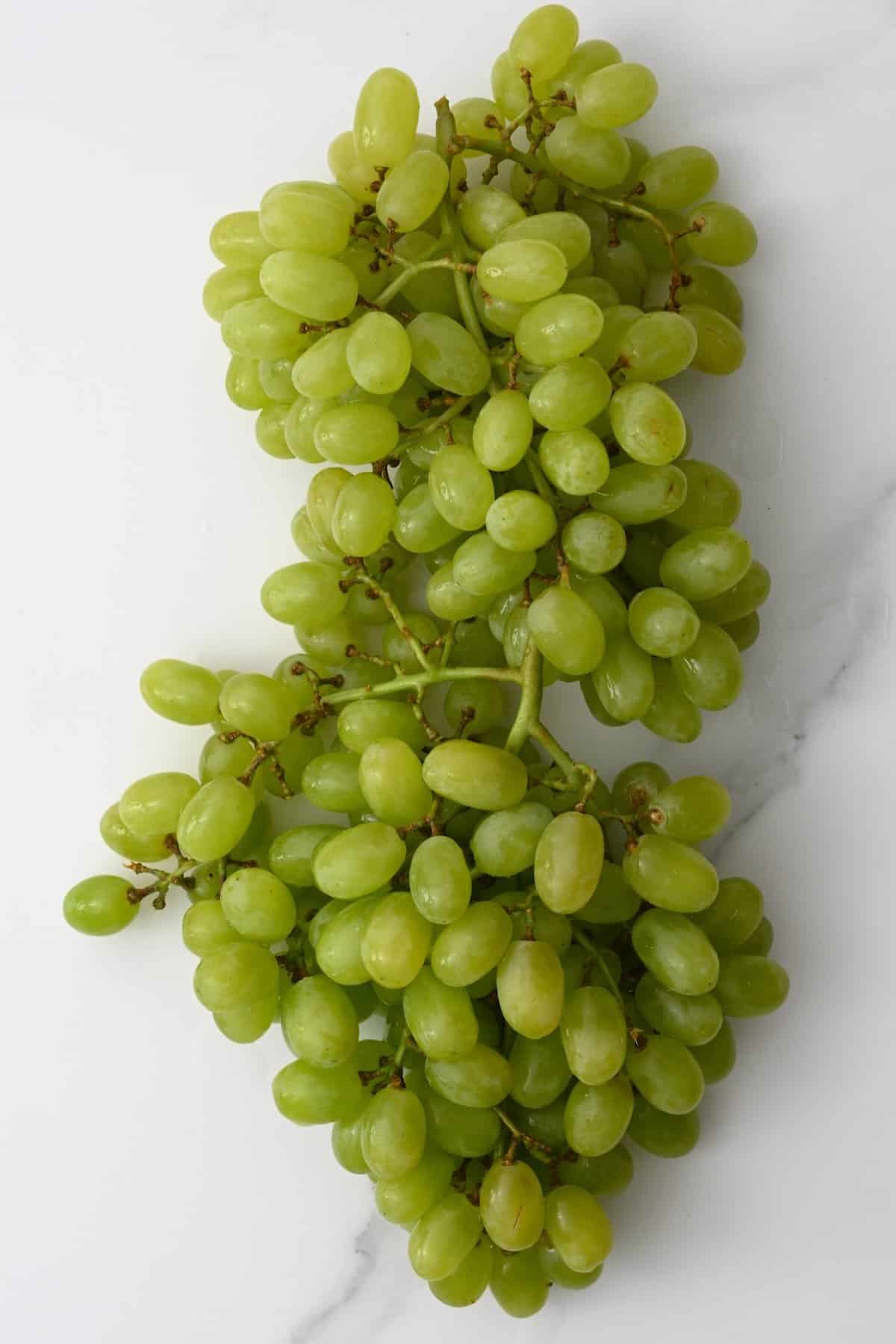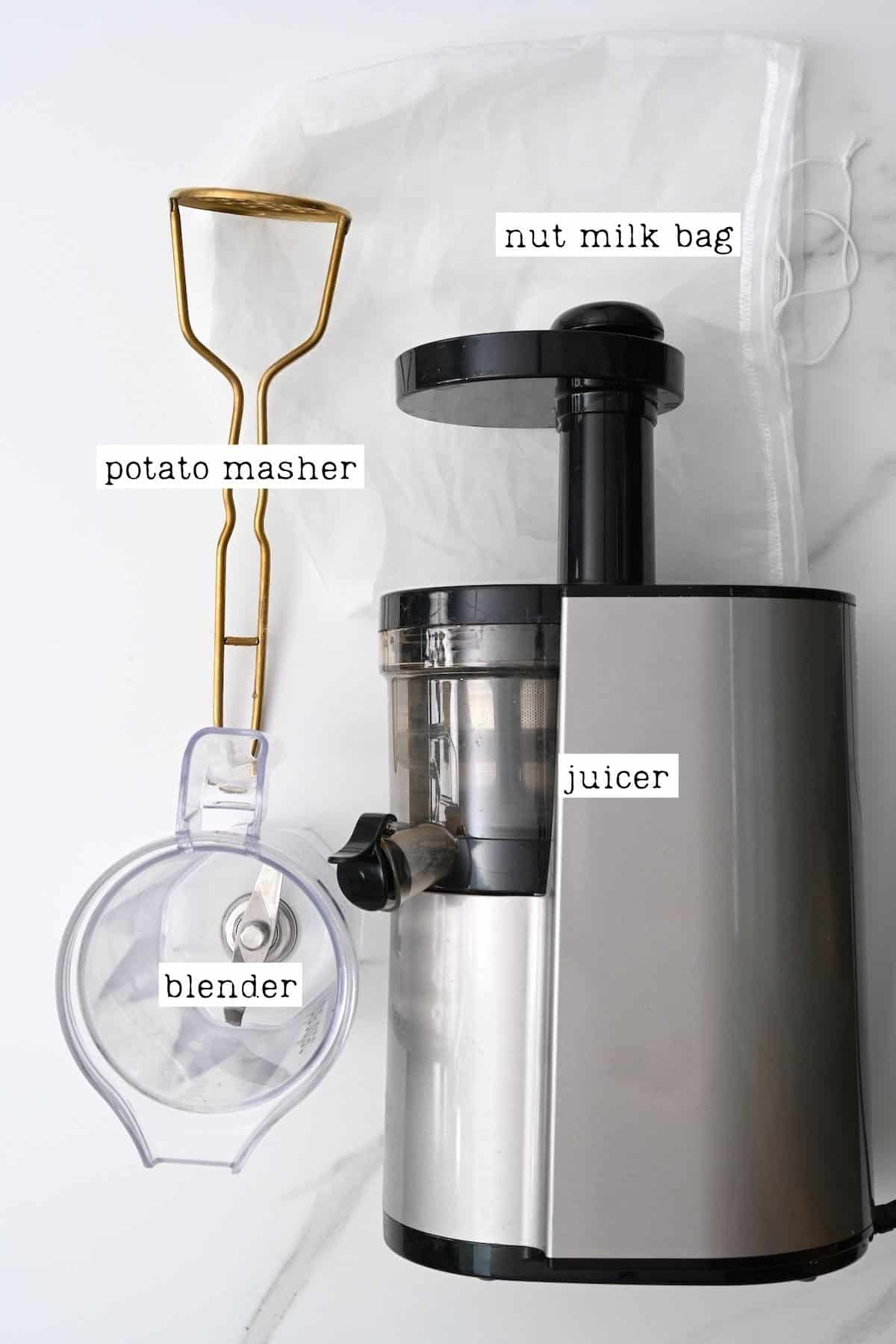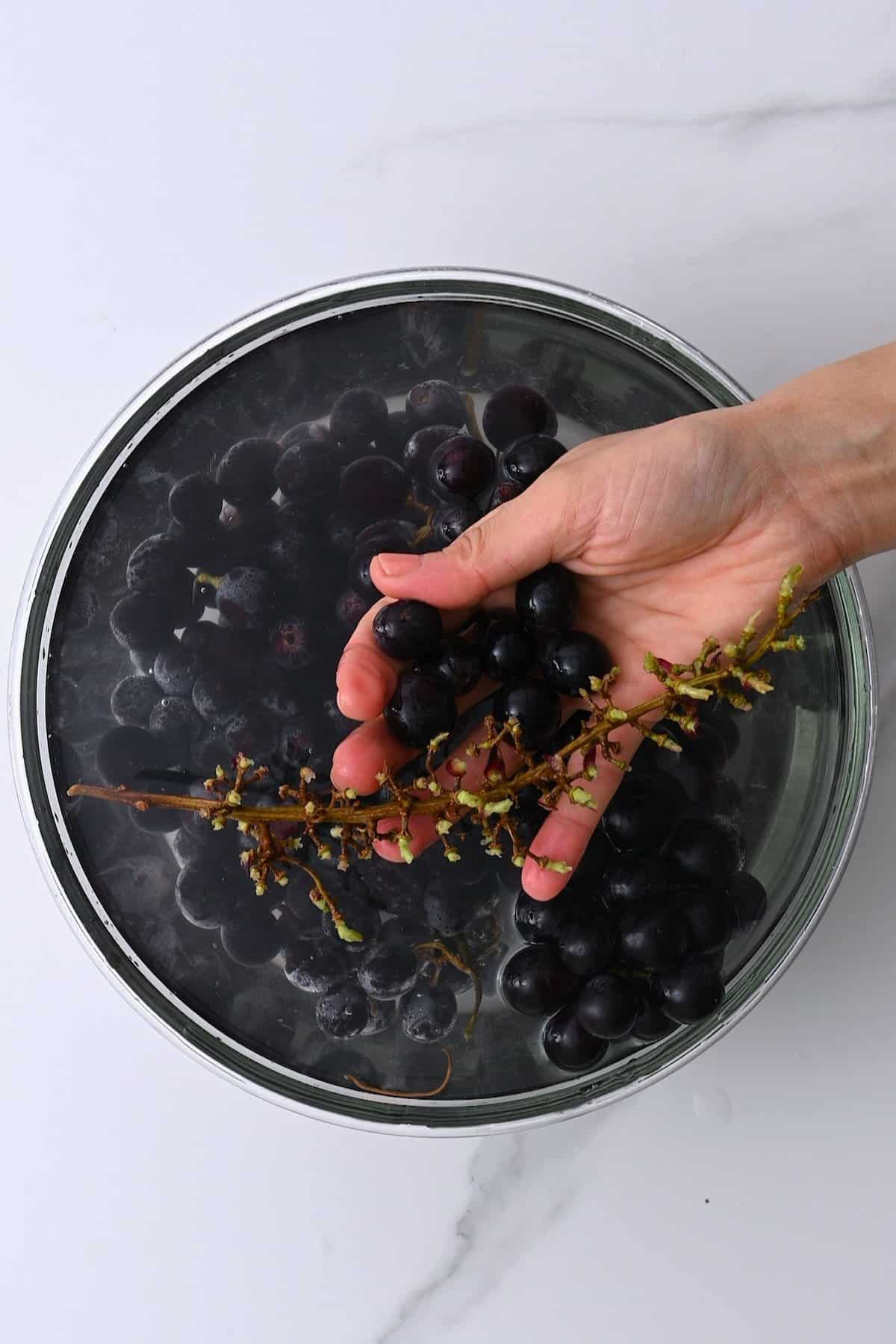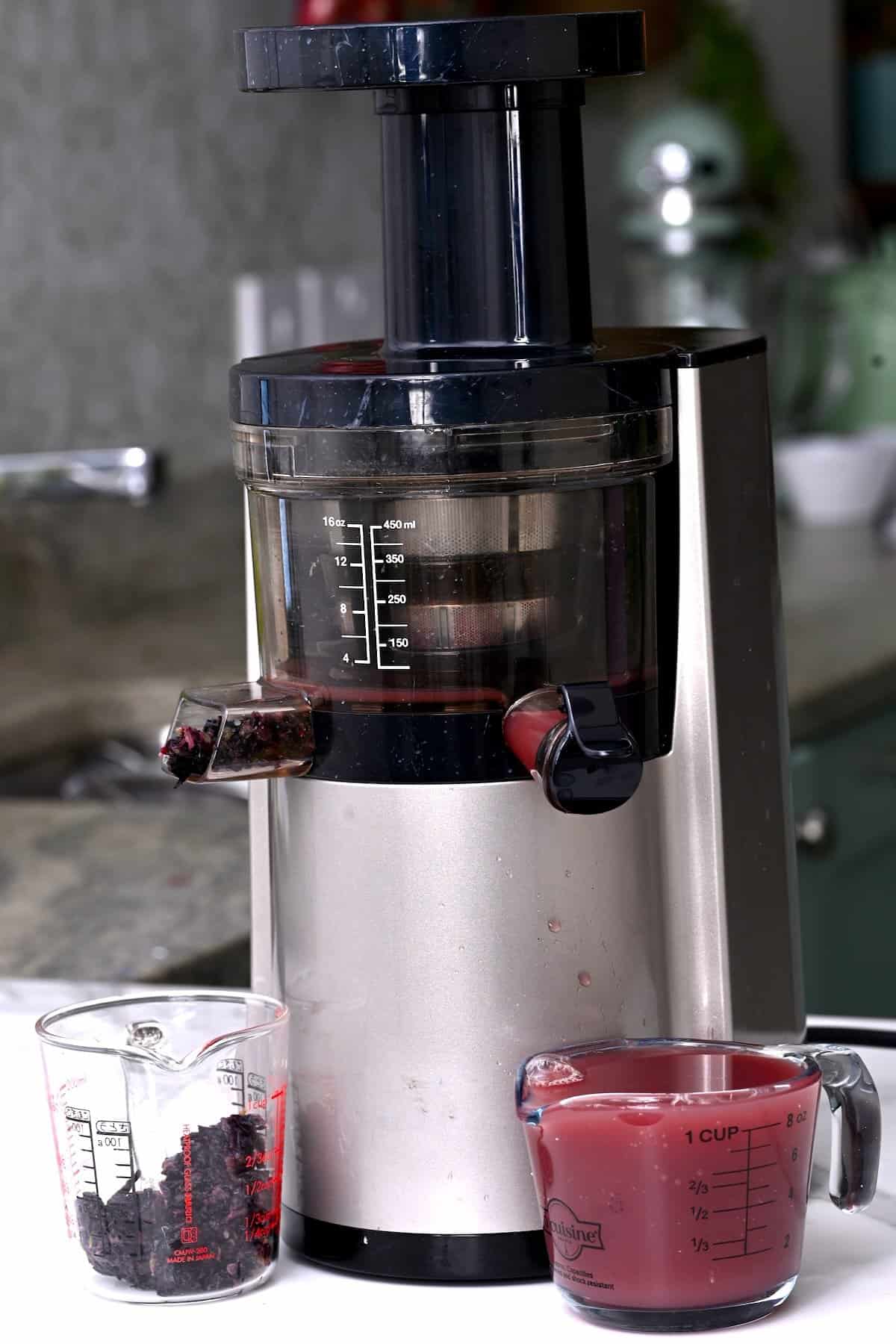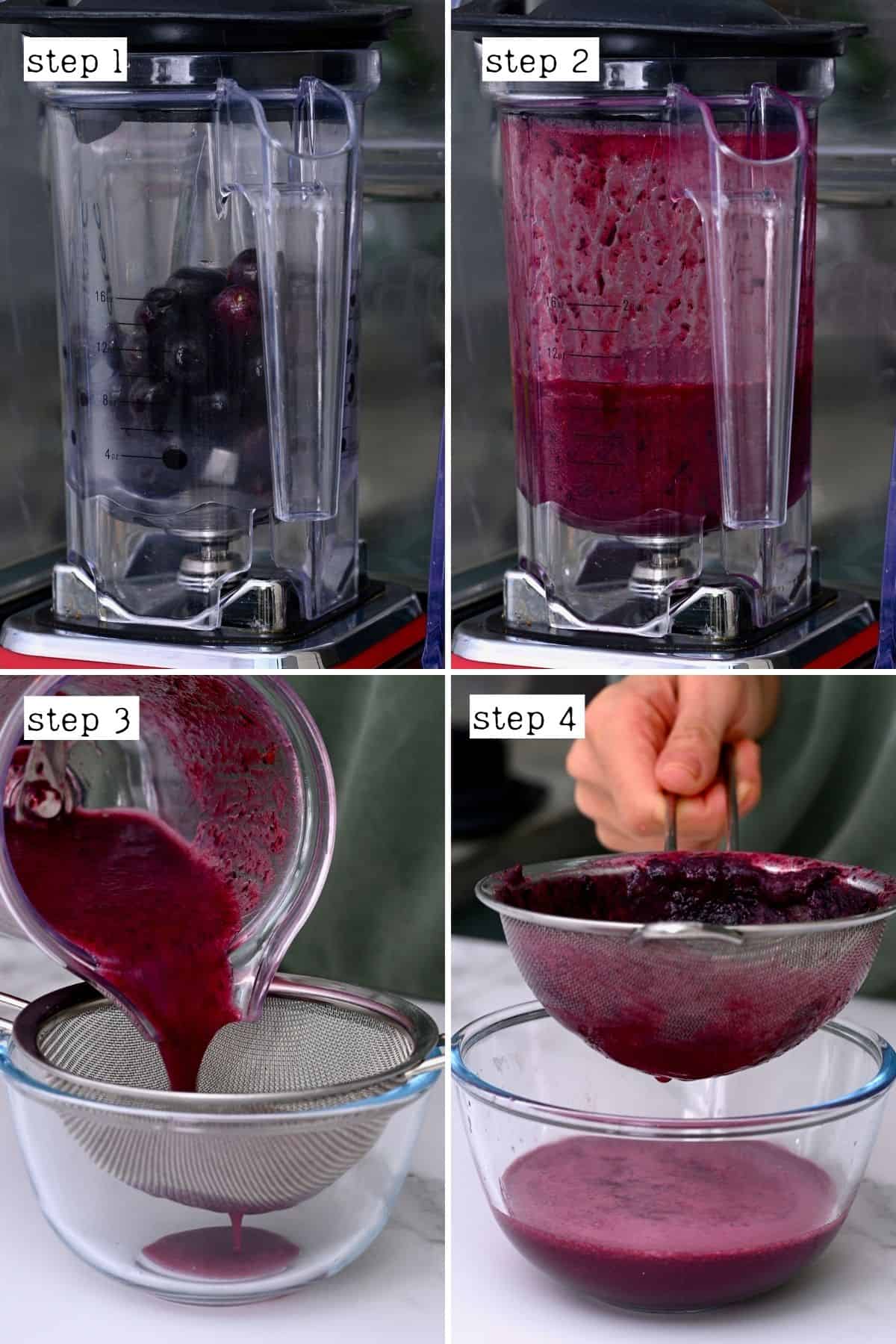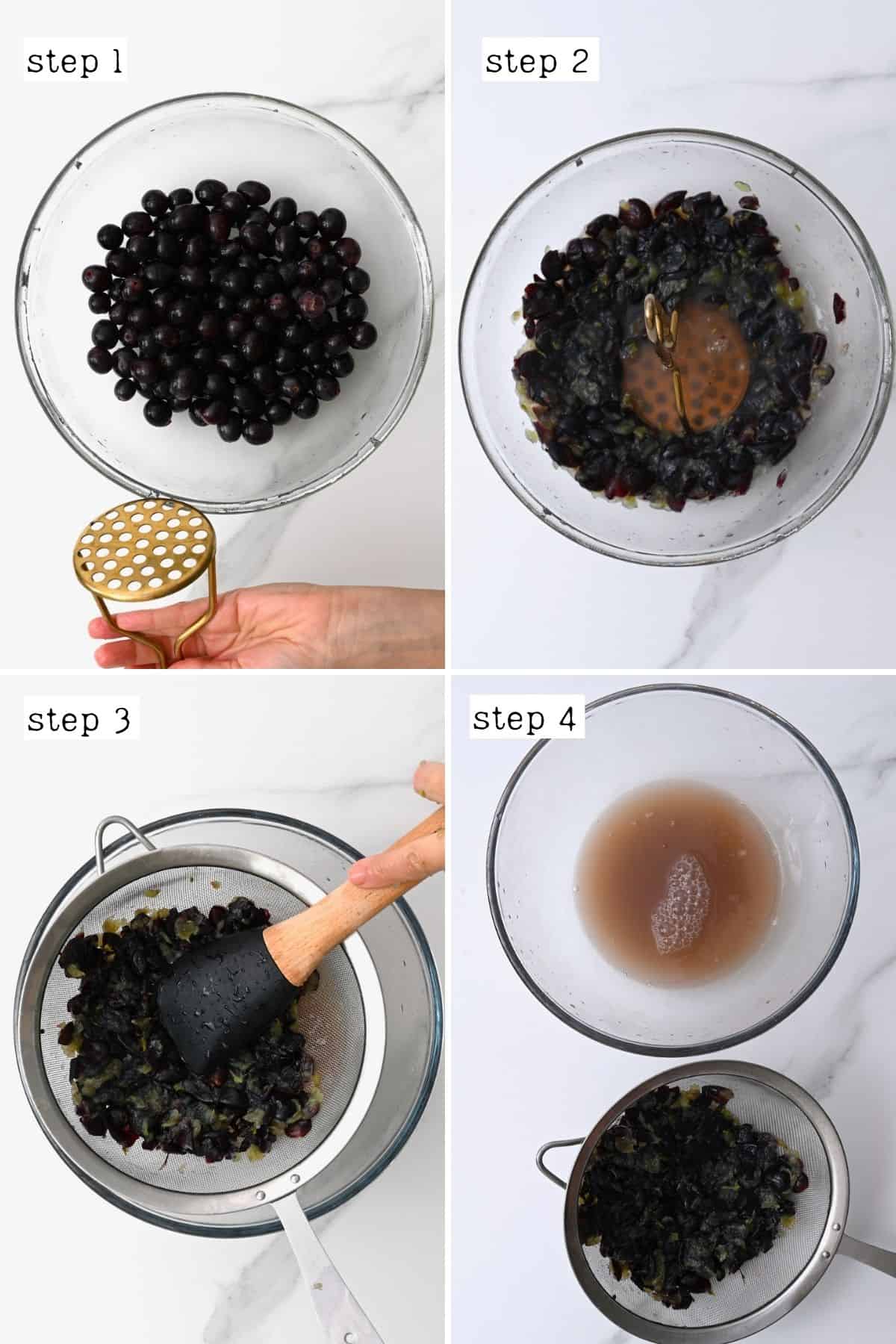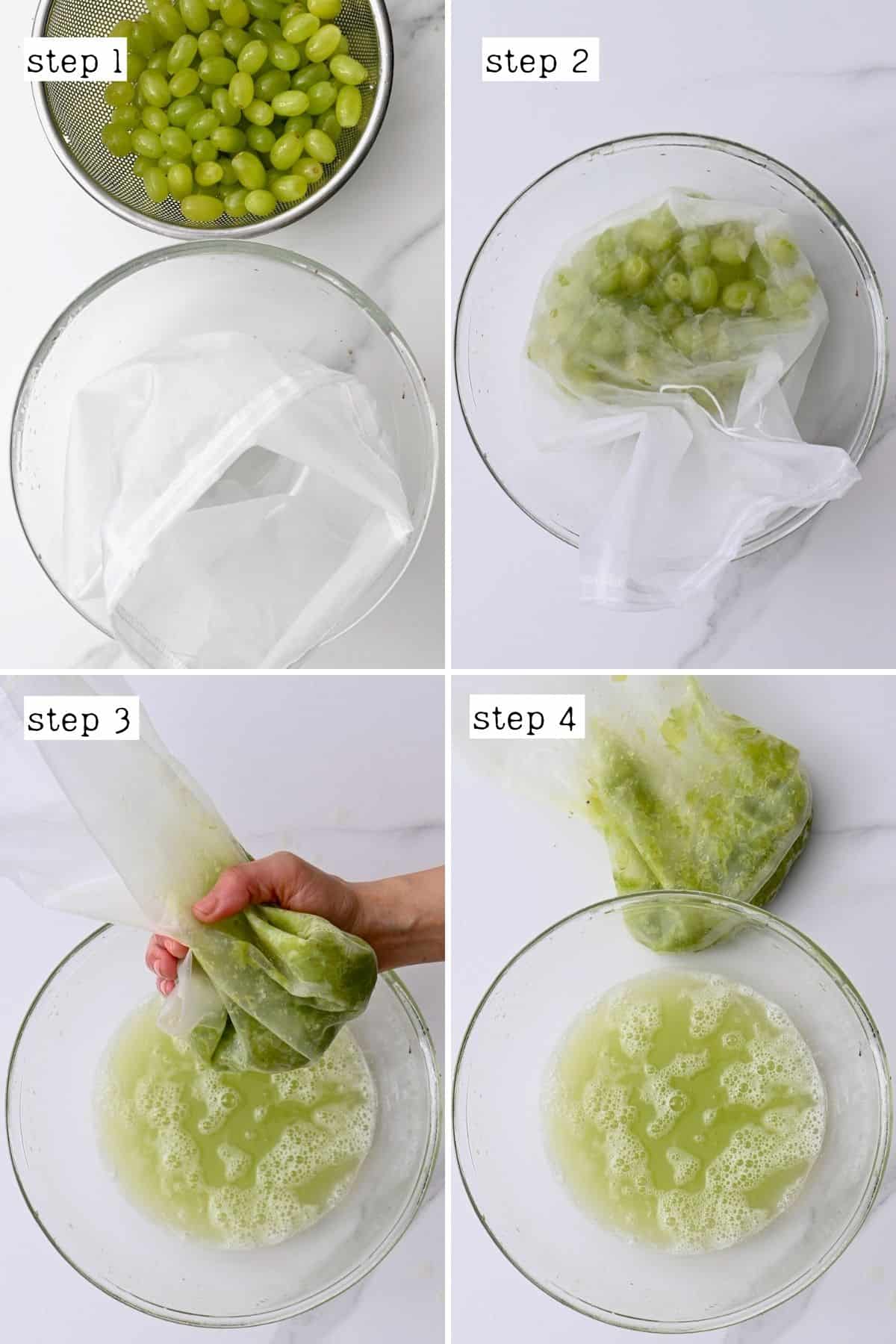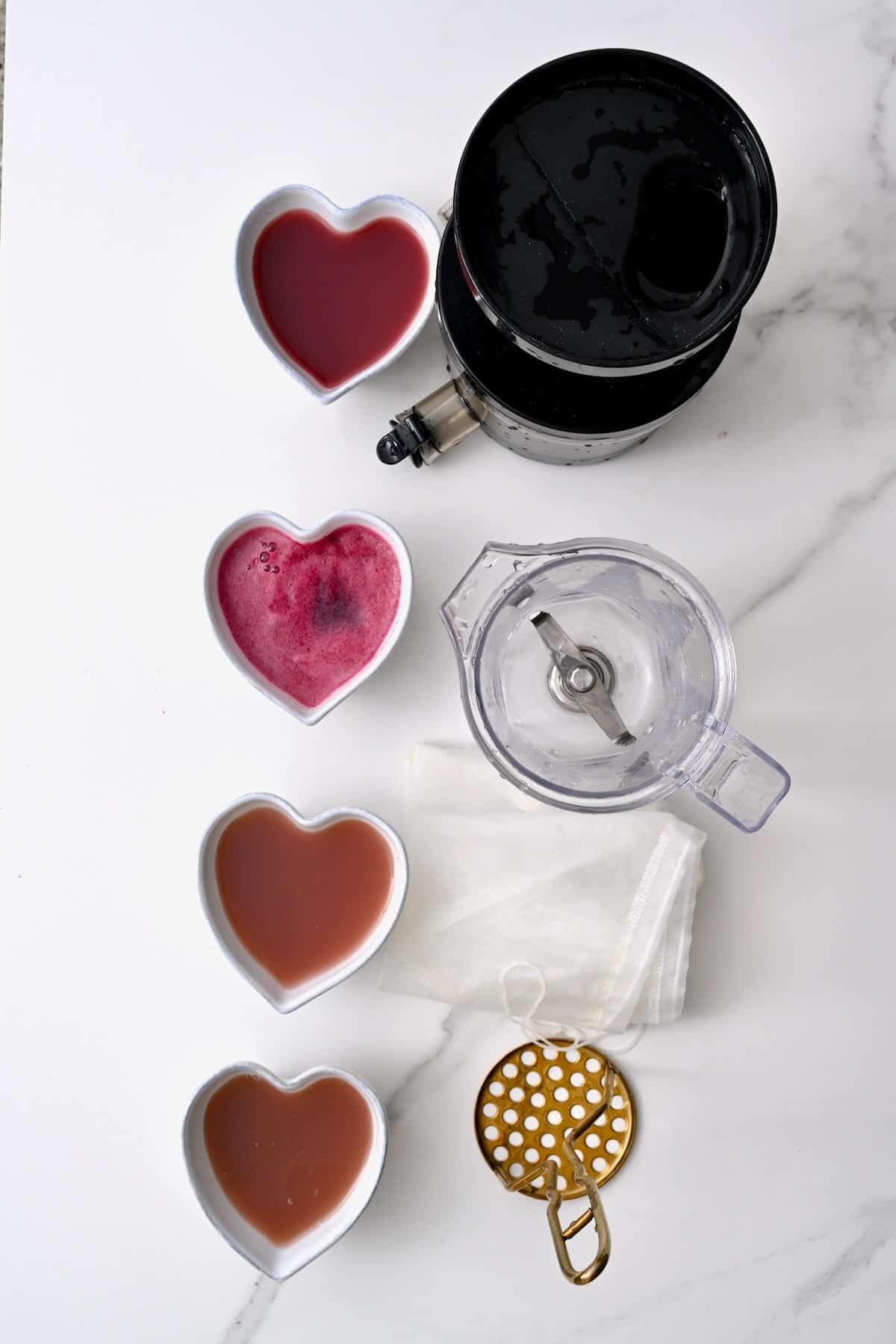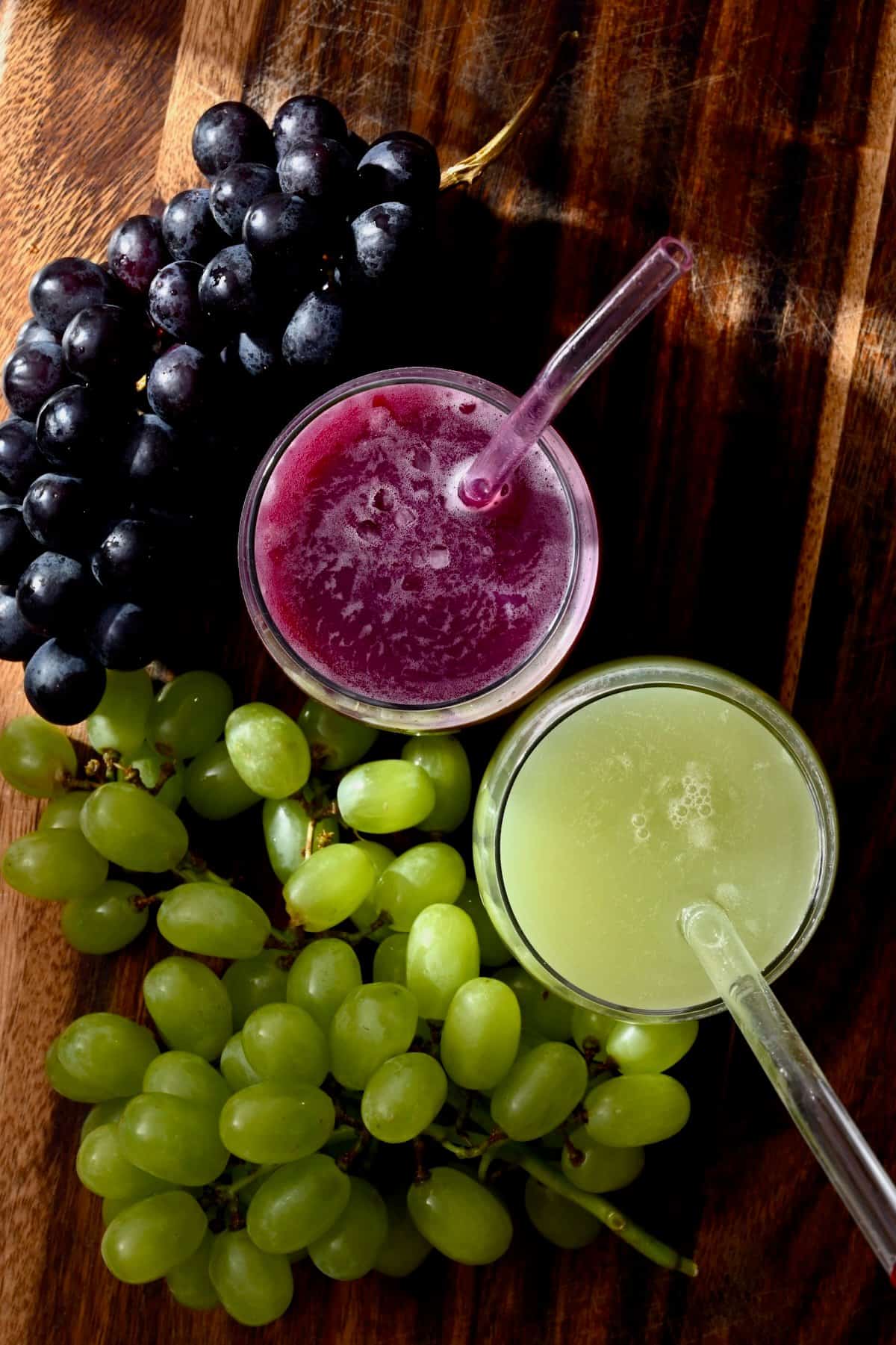Making grape juice at home is just the latest of MANY homemade juice recipes I am sharing. My most recent ones include homemade mango juice, pineapple juice, and how to juice lemons. This grape juice recipe not only requires just one ingredient (grapes) but there are five methods to choose from to extract the sweet, refreshing juice! If you have grapevines, then learning how to make grape juice is a fantastic way to make the most of your bounty. Alternatively, if, like me, you just buy grapes by the cartful when they’re in season, grape juicing is another way to appreciate this fruit. Plus, with methods including how to make grape juice with a blender, juicer, masher, by hand, or stovetop, there’s a way for everyone to enjoy it!
Grape juice benefits
The exact nutrient levels and benefits will vary between grape varieties (particularly those of different colors – black vs. red vs. green grape juice). However, as a general rule, grapes are packed with healthful flavonoids, antioxidants, and several vitamins and minerals. Fresh grape juice is also particularly known for its heart benefits. This includes maintaining healthy blood pressure, reducing the risk of clots, and maintaining blood vessel health. Not to mention its benefits for skin health, too. All the while, this grape juice recipe remains relatively low calorie, often naturally sweet, and contains zero cholesterol. Yay!
What you’ll need
Grapes: I recommend using organic where possible. Any grape (green, red, black) will work for these methods, though I prefer to use seedless grapes when possible. I’ve tried red, black, and green grape juice with excellent results.
Add extra flavor to the juice with freshly squeezed lemon juice, easy homemade ginger juice, or fresh herbs like mint leaves or basil. You
You’ll also need
Depending on which method for how to make grape juice you use, you’ll need one or more of the tools below:
Juicer, Food Processor OR Blender, Potato Masher, Sieve or Nut Milk Bag (several layers of cheesecloth may also work).
Top tips for the best results
Grapes may stain: so be careful with what you wear and use during the process. Avoid reactive cookware: it can impart a metallic taste in the homemade grape juice. When straining naturally: it’s best to do so in the refrigerator. The pulpy grape flesh/juice mixture will ferment quickly when left too long at room temperature. The double strain: depending on which method you use, you may want to strain the juice twice to rid it of as much sediment as possible. ALTERNATIVELY, allow the juice to rest in a container for 24 hours and the sediment will settle at the bottom. You can then transfer the juice on top to another container. Adjust sweetness if preferred: depending on the variety of grape you use, you may or may not find you’d like to add some sweetener. I.e., concord grapes make a wonderfully sweet grape juice. However, green grape juice may need to add sugar or other sweeterner (just a small amount).
How to make grape juice?
Step 1: Prepare the grapes: First, rinse and de-stem the grapes, removing any broken/shriveled ones (or ones that appear under or overripe) as you go. You could also soak them in a bowl with water and salt or use one of these three methods to clean the grapes properly. For a higher juice yield: mash the grapes in a large, heavy-based saucepan. Then, after step 2, gently simmer the mixture of medium to medium-low heat for 8-10 minutes, stirring and mashing occasionally (this step softens the grapes to make them more easily mashable). Then strain the mixture through a sieve or nut milk bag. The machine will naturally strain the pulp and seeds so the juice is immediately ready to use (or freeze). Adding a small amount of water to the jug (start with ½ cups of water) may help with the blending. I recommend using a flat bottom container (like a saucepan shape) to make the mashing easiest and get into all the corners.
How to store fresh grape juice?
To store in the refrigerator: to consume the maximum nutrients from the juice, it’s best to enjoy it immediately. However, homemade grape juice will last 5-7 in airtight jars/jugs in the refrigerator. To help extract more juice, you could first place the grapes in a large Ziplock bag and bash them with a rolling pin or similar heavy tool. Then transfer them to the nut milk bag to finish the squeezing process. You could also leave it overnight to naturally drain in the refrigerator. Then do a second quick strain in the morning. After that, it will begin to ferment (it is still edible, but it will turn sourer and have some carbonation). When left too long, the juice will become vinegar. Can you freeze grape juice? While technically possible, the thawed juice tends to lose quite a bit of flavor, so I don’t recommend it.
More juice recipes
Watermelon juice (4 methods) Carrot juice Pineapple juice (Multiple methods) Peach Juice (Peach Nectar | 2 Methods) Cherry Juice (Multiple Methods) Passion Fruit Juice (2 Methods)
If you try one of these methods for how to make grape juice (red, green, or black), I’d love to hear your thoughts/questions below. Also, I’d appreciate a recipe card rating below, and feel free to tag me in your recipe recreations on Instagram @Alphafoodie!






